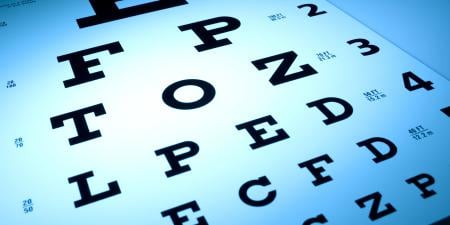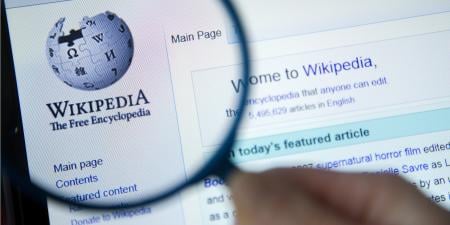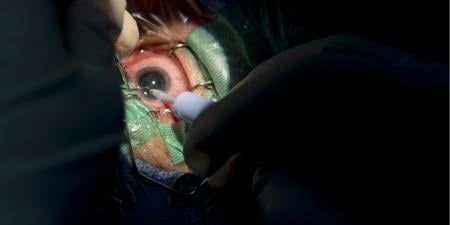Surgical creation of a superior palpebral fold, known as the double-eyelid operation, is the most popular cosmetic surgery in Asia and the third most frequently requested surgery (including noncosmetic procedures) among Asian Americans [1]. The literature on this procedure has focused mainly on the evolving technical aspects; fewer works have discussed the ethical implications of a surgery that has the potential to alter a feature characteristic of ethnicity.
Background
Broadly speaking, upper eyelid blepharoplasty procedures in Asians may be divided into two categories: external incisional techniques and nonincisional or suture ligation techniques [1]. While a detailed explanation of these procedures exceeds the scope of this article, current and past surgical techniques have focused on three key anatomical features of Asian upper eyelids. At least 50 percent of Asians have a single eyelid, which is to say the eyelid has no supratarsal crease [2]. Additionally, Asians tend to possess a greater number of eyelid fat pads and a larger amount of subcutaneous and suborbicularis fat than members of other ethnic groups, and the periorbital fat is lower [1]. These qualities of the periorbital fat compartment in the upper eyelids contribute to the “puffiness” of the single eyelid, further obscure the supratarsal crease, and may produce pseudoptosis [2].
A third anatomical difference between the upper eyelids of Asians and Caucasians is the presence of an epicanthal fold, which obscures the medial canthus (inner corner) and gives the eye a relatively narrow appearance [2]. This fold is universally present among humans at birth but is only seen in 2 percent of non-Asian adults [1], while the incidence in Asians may be as high as 90 percent [2].
Historical Perspective
The Japanese surgeon Mikamo was the first to publish on the double-eyelid technique, detailing the creation of a supratarsal crease in the upper eyelid in 1896; this innovation occurred in the context of the cultural westernization of Japan in this era [3]. In his original article, Mikamo described the single eyelid as “monotonous and impassive” and labeled the double eyelid as physiologically normal and “more attractive” [4]. While Mikamo was the first surgeon to westernize the eyelid of Asians, several authors report that his intent was to create a unique Japanese aesthetic that mirrored the kind of double eyelid that occurs naturally in the Asian population [1, 3]. Other authors argue that the desire for the more expressive, alert appearance felt to be conveyed by the double eyelid predates Western influences in Asia [2].
Controversy
It is important to note that this procedure has been condemned by some as an effacement of defining ethnic feature [5]. Sociologist Eugenia Kaw, for example, suggested that Asian American women’s decisions to undergo upper eyelid blepharoplasty may be influenced by racial stereotyping [6]. Kaw notes that Caucasian patients usually undergo upper eyelid blepharoplasty to remove redundant skin resulting from aging, while Asian women who undergo eyelid surgery are younger (between 18 and 30 years of age) and do not typically seek to reduce the signs of aging [6]. In Kaw’s studies, Asian American women who requested these procedures often associated their own features with descriptors of “dullness” and “passivity,” and sought out more typically Caucasian features such as the double eyelid at least partly due to associations in the popular media between distinctively Asian features and negative personality traits, mental characteristics, and physical descriptions [6]. Some young women may see the procedure as a rite of passage, and some Asian American families obtain the surgery for their daughters because they view it as a social credential [5].
Current Trends: Striking a Balance?
How should physicians who perform blepharoplasty on Asians respond to the ethical concerns raised by the attitudes and motivations surrounding this procedure? Increasingly aware of ethnocultural issues, many surgeons have adopted techniques to produce the double eyelid without fully westernizing its appearance [5]. In fact, several authors claim that most Asian patients do not seek a fully westernized appearance. These authors advise against techniques that would diminish distinctive ethnic characteristics and recommend instead several surgical techniques designed to deliver a natural-appearing double eyelid while still making the eye appear larger [1, 2, 7].
McMurdy asserts that patients today are not usually seeking the classic westernized eyelid, which would require removal of large amounts of fat and skin and liberal manipulation of the epicanthal fold [2]. McMurdy and several other surgeons recommend more conservative resection, preservation of the epicanthal fold [2, 8], and creation of a parallel supratarsal crease (as opposed to the semilunar crease more typical of the upper eyelids of Caucasians) [1]. However, physicians advocating this balanced approach to the blepharoplasty note that a minority of patients do seek to westernize their appearance; surgeons should be wary of this possibility [7].
Current surgery literature and Kaw’s research appear to differ in their estimates of the number of patients seeking a westernized appearance rather than a more natural Asian or individualized aesthetic. While Kaw indicates that racial stereotyping influences most Asian American women’s decision to pursue cosmetic surgery, these studies are based on small sample sizes [6]. Surveys of large groups regarding motivation to undergo blepharoplasty are currently unavailable.
Future Directions
Are patients who undergo double-eyelid procedures motivated to seek a unique aesthetic, to create their own standard of beauty? Or does this surgery promote ethnic standardization, reinforce racial stereotypes, and represent, as Kaw writes, “an attempt to heal a specific doubt about oneself that society has unnecessarily brought on” [6]? Given the hot-button ethical, cultural, and racial issues surrounding double-eyelid procedures, it seems prudent that physicians carefully examine the motivation and expectations of Asian patients selected for blepharoplasty.
Blepharoplasty has now been performed on Asians for more than a century [3], and, although there is debate as to whether or not is a product of western influence [2], the popularity of the surgery indicates that it is here to stay. At least, some patients who seek this procedure are attempting to modify a feature linked to a racial or ethnocultural identity and its popularity suggests that negative stereotyping of ethnic features is powerful indeed.
All cosmetic surgery, however, seeks to alter features linked to an individual’s identity, and it may be difficult to truly understand a patient’s motivation to undergo such a procedure. Physicians should ask patients why they are seeking blepharoplasty without persuading or dissuading them. While no reason is invalid, the patient should be encouraged to reflect on his or her own expectations and motivations regarding the procedure and beliefs about ethnicity and appearance. This should allow practitioners to select appropriate candidates for surgery.
References
- Nguyen MQ, Hsu PW, Dinh TA. Asian blepharoplasty. Semin Plast Surg. 2009;23(3):185-197.
- McCurdy JA Jr. Beautiful eyes: characteristics and application to aesthetic surgery. Facial Plast Surg. 2006;22(3):204-214.
- Lam SM. Mikamo’s double-eyelid blepharoplasty and the westernization of Japan. Arch Facial Plast Surg. 2002;4(3):201-202.
- Mikamo M. Plastic operation of the eyelid. J Chugaii Jishimpo. 1896;17(1197):
- Ouellette A. Eyes wide open: surgery to westernize the eyes of an Asian child. Hastings Cent Rep. 2009;39(1):15-18.
-
Kaw E. Opening faces: the politics of cosmetic surgery and Asian American women. In: Crawford M, Unger RK, eds. In Our Own Words: Readings on the Psychology of Women and Gender. 1st ed. New York: McGraw-Hill; 1997: 55-73.
-
Lee CS. Blepharoplasty, Asian. eMedicine. http://emedicine.medscape.com/article/1282140-overview. Accessed October 5, 2010.
- Talakoub L, Wesley NO. Differences in perceptions of beauty and cosmetic procedures performed in ethnic patients. Semin Cutan Med Surg. 2009;28(2):115-129.



